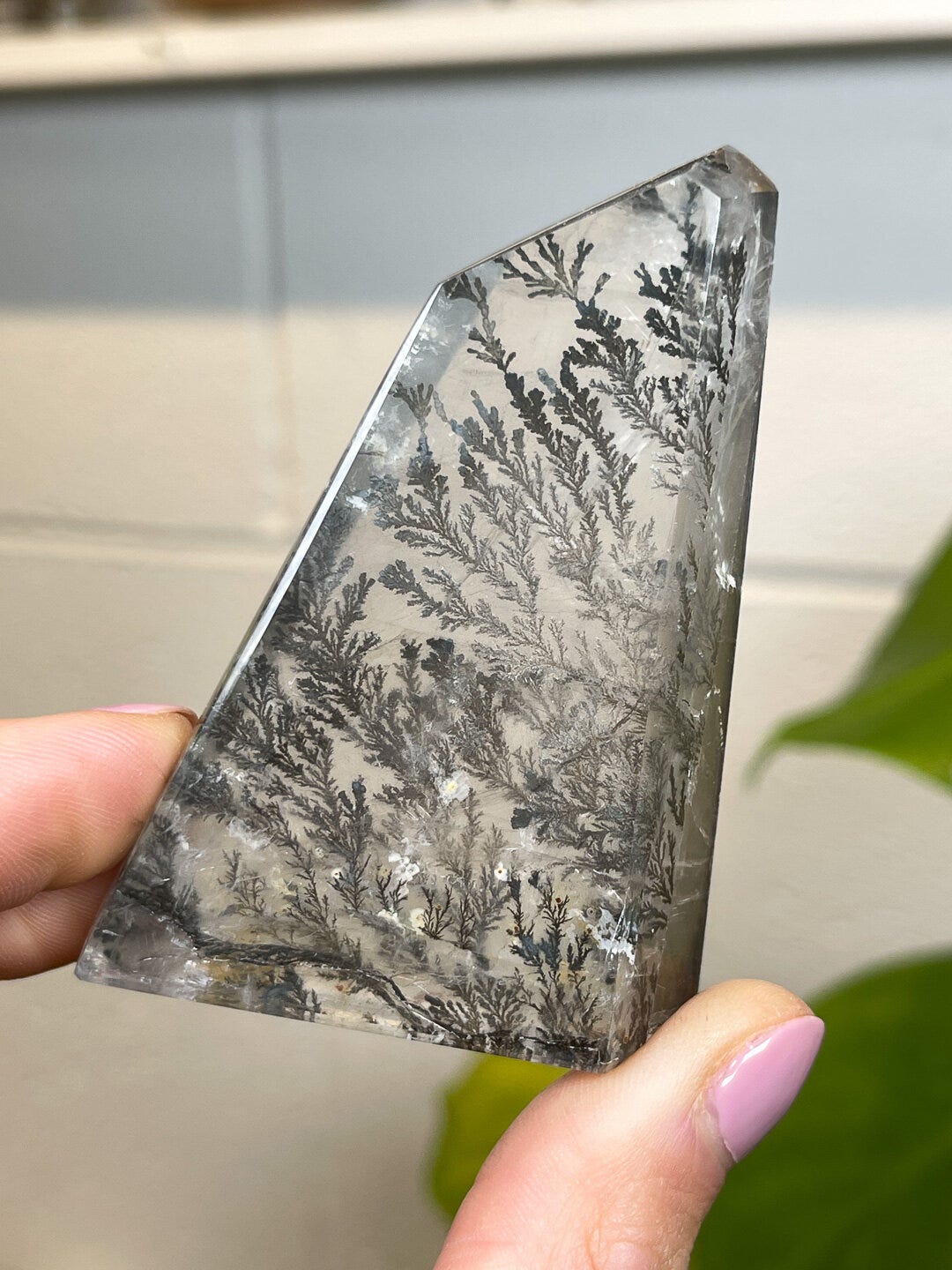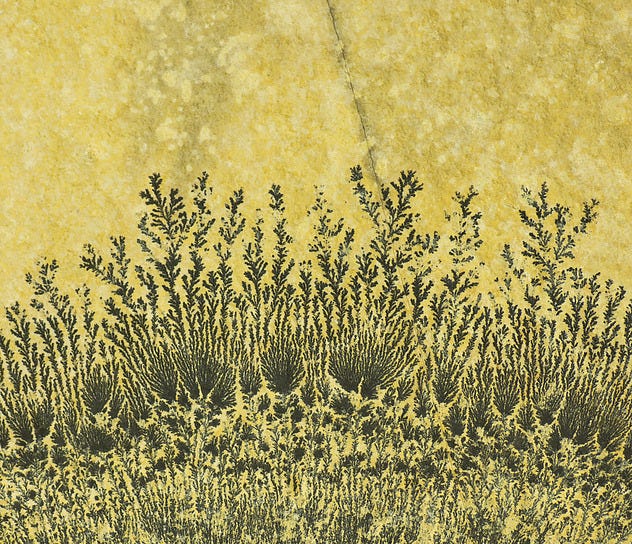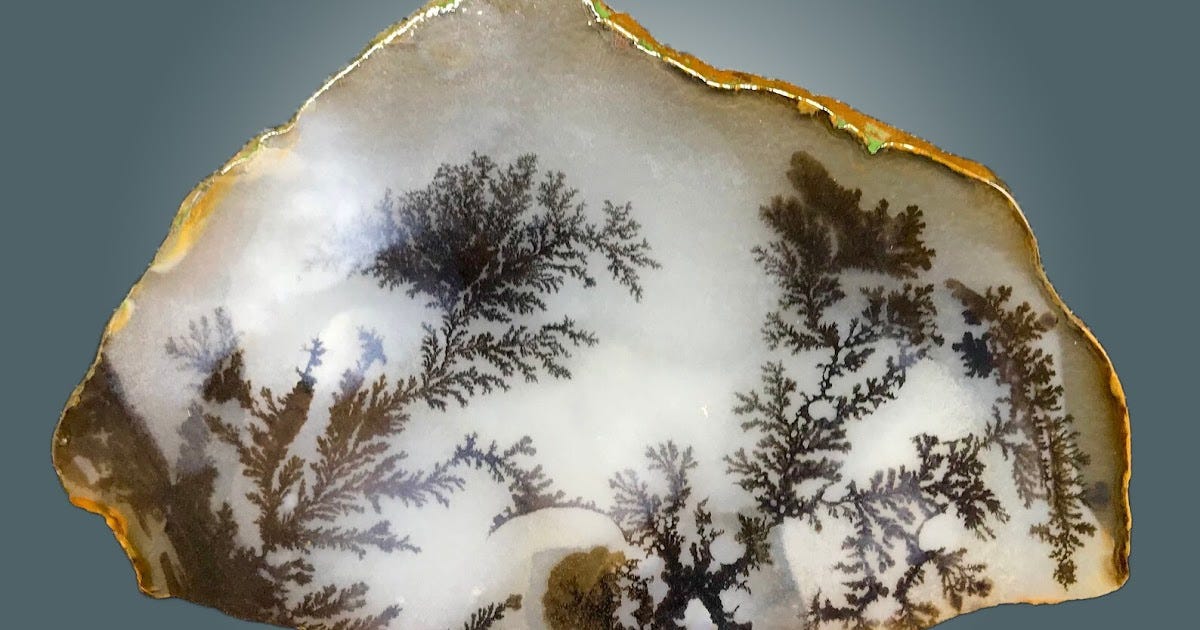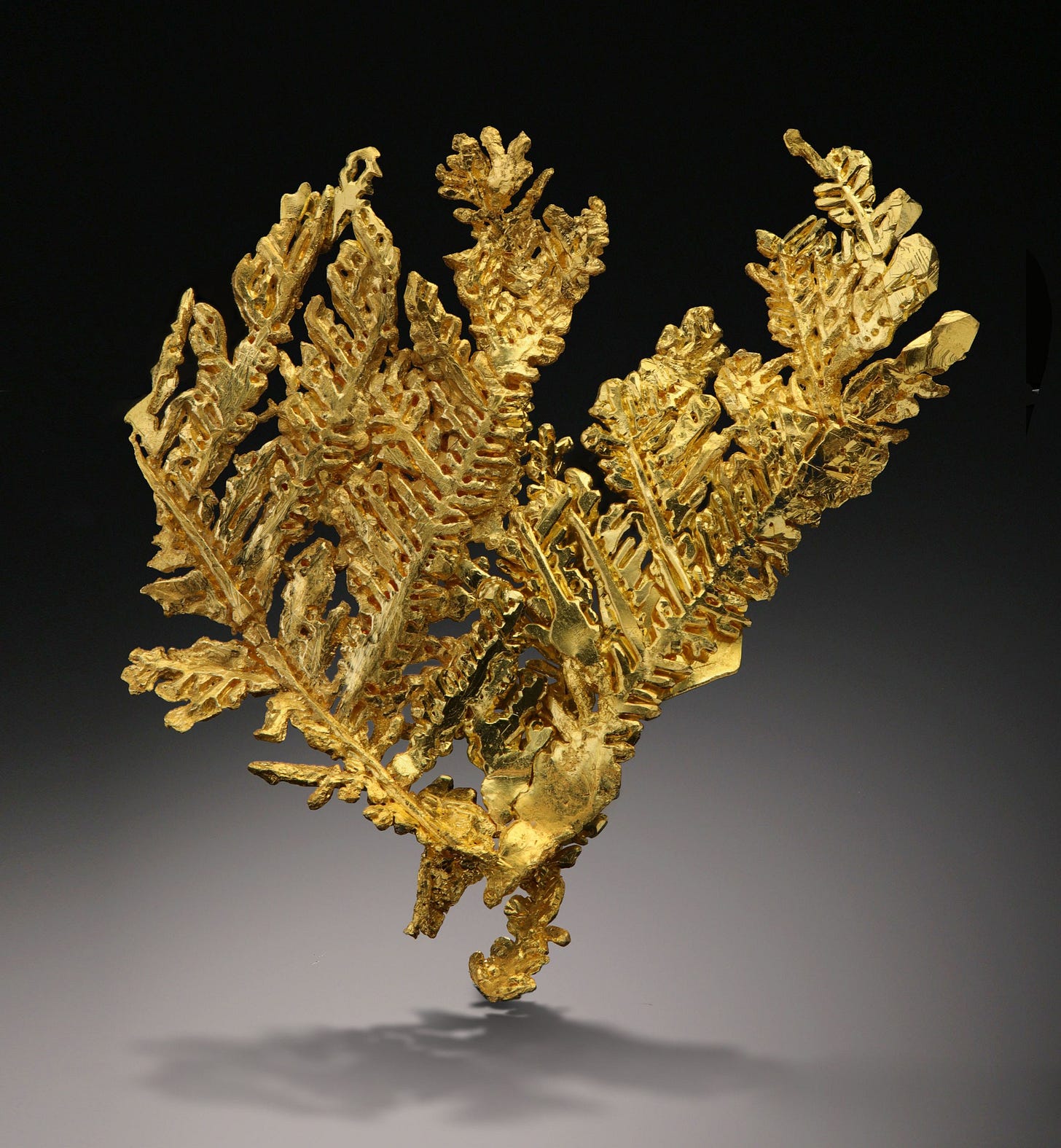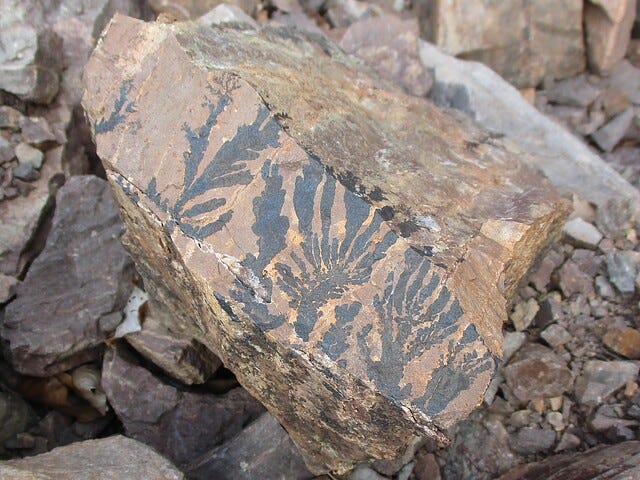The Nature of Dendritic Patterns
How They Form and Why They Look Organic
Dendritic mineral patterns are among the most striking natural designs found in rocks, resembling delicate tree branches, river deltas, or veins of leaves frozen in stone. Despite their botanical appearance, these structures are entirely inorganic, formed when mineral-rich fluids, often containing manganese or iron oxides, seep into tiny fractures or bedding planes in the host rock. As the minerals precipitate out of the solution, they grow outward in a branching, fractal-like structure. The resulting designs are so intricate that they often mimic plant fossils, earning them the nickname “nature’s sketches.” In Alaska, these can be found in sedimentary deposits, quartz-rich agates, and even cherts, where the conditions for mineral-rich water infiltration have existed for millions of years.
The tree-like shapes are not random; they are governed by principles of diffusion-limited growth. When mineral-laden water spreads through porous rock or along a bedding surface, it deposits oxides in the direction of least resistance. The precipitation begins at one point, then continues branching as new surfaces are exposed, resulting in a self-similar fractal, patterns that repeat at multiple scales, just like the branching of trees or river systems. This gives dendrites an uncanny organic resemblance, despite having no biological origin. In volcanic regions of Alaska, especially where ancient lava flows meet sedimentary basins, dendritic manganese oxides can decorate the surfaces of sandstones and mudstones, producing dramatic contrasts of dark black against pale rock.
Throughout history, dendritic patterns have carried symbolic weight because of their lifelike forms. In many cultures, they represent growth, interconnection, and the branching paths of life. Ancient peoples often viewed them as messages from the earth, associating them with fertility and the continuity of nature. In modern metaphysical interpretations, dendritic stones, especially dendritic agates, are seen as talismans of patience, resilience, and grounding, thought to embody the wisdom of slow, steady growth. Their repeating, tree-like patterns reflect the fractal beauty of the natural world, reminding us that even in the smallest mineral trace, the forces that shape mountains, rivers, and living ecosystems are echoed in miniature.
Dendritic mineral patterns are nature’s perfect impersonators, often mistaken for ancient plant fossils, even by seasoned geologists, because their delicate, tree-like forms so closely resemble ferns, moss, and branches. Sometimes called “nature’s ink drawings,” these striking designs look hand-painted onto stone, especially where dark manganese oxides stand out against pale rock surfaces. In Alaska, dendritic inclusions are prized in agates, cherts, and cabochons, with some specimens displaying multicolored effects when iron, copper, or nickel oxides mix together. Scientifically, dendrites are natural fractals, self-repeating patterns that mirror themselves at every scale, much like snowflakes, river deltas, and lightning bolts. Historically, they’ve carried symbolic weight: in Europe’s Middle Ages, they were known as “writing stones” or “moss agates” and were believed to contain hidden messages, divine imprints, or ancient plant spirits. Alaska’s varied geology makes them especially fascinating here, as dendritic patterns can appear in agates, chert nodules, fossil-rich beds, and even glacial deposits where mineral-laden water once seeped through fractures, leaving behind these intricate, lifelike imprints.
For rockhounds in Alaska, dendritic patterns are like hidden signatures left by the Earth itself, waiting to be discovered. These intricate, tree-like formations can be found in agates, cherts, sandstones, and even along glacial deposits where mineral-rich water once seeped through ancient fractures. Because they mimic plant fossils so convincingly, every find carries a sense of mystery, are you holding a trace of ancient life, or nature’s perfect impersonation? Scouring riverbeds, gravel bars, and exposed outcrops often rewards patient collectors with stones that seem to hold miniature landscapes within them. In Alaska’s vast and varied geology, hunting for dendritic patterns is as much about exploring deep time as it is about uncovering beauty, with each discovery connecting you to the slow, steady artistry of mineral growth beneath the Last Frontier.

